Brass photochemical etching is a clean and precise technique to shape brass sheets without using sharp tools. It uses a light to help design onto the metal. Then, the chemicals remove unwanted brass. This method keeps the metal flat and smooth.
It is good for making tiny parts, thin sheets, and detailed cuts. You can get fine holes, small shapes, or curves that are hard to do with other cutting methods. It also saves you time and money when making samples.
In this article, you will explore the full process of how does brass photochemical etching works. So, keep reading to explore more.
Why Brass Is a Good Choice for Photochemical Etching?
Brass is one of the most popular metals used in photochemical etching. It provides a quality mix of detail control. Many industries choose brass because it performs well during the etching process. The metal responds well to chemicals, holds, and stays flat. Let’s look at three main reasons manufacturers prefer brass for etching.
1. Excellent Etchability
Brass easily reacts with ferric chloride. It enables the design to come out clean with sharp lines and tight spacing. You can make detailed parts without rough edges or undercuts.
2. Dimensional Stability
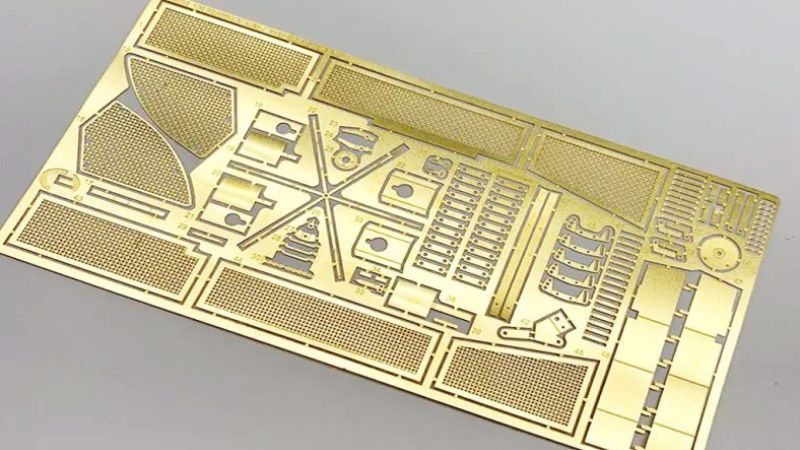
Brass stays flat during the whole photochemical etching process. It does not warp or bend the metal easily. It is important for thin designs with fine cuts. Good stability helps keep the final shape true to the design.
3. Smooth Surface Finish
Brass gives a nice, smooth surface after etching. This is good when the part needs to be used in visible places or needs bonding with other layers. A smooth finish also helps in coating later.
Specifications of Brass Photochemical Etching

It’s important to understand the material specification before starting the brass photochemical etching project. It makes sure the design works well with the process. Brass comes in many grades, and each type reacts slightly differently. The right metal thickness also matters for detail and strength.
TMNetch’s has experience working with various brass types through its photochemical etching services. The company supports tight tolerances, fine detail, and works with a wide range of thicknesses.
Their technical expertise and advanced equipment help ensure clean, consistent results across different applications. The company delivers precise, high-quality photchemical etching parts that meet customer needs. They focus on accuracy, speed, and reliable service every step of the way.
Below is a quick view in table form of what brass grades and specs are typically supported.
| Specification | Details |
| Supported Brass Grades | C260 (Cartridge Brass), C280 (Muntz), C230 (Red Brass), others on request |
| Metal Thickness Range | From 0.0005″ (12.7 microns) up to 0.040″ (1 mm) |
| Tolerances | Standard ±0.001” depending on metal type and thickness |
| Minimum Feature Size | Down to 0.004″ based on thickness and layout complexity |
| Output Quality | Burr-free, flat parts with no warping or mechanical stress |
How does Brass Photochemical Etching Work? Step-by-Step Guide
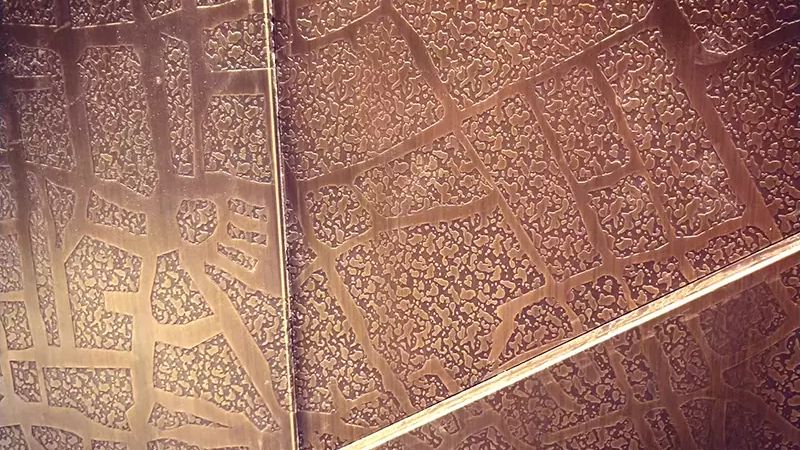
Etching brass using the photochemical method is a precise process. But to get clean results, each step must be done carefully. The process depends on light-sensitive coatings and controlled chemical reactions. Below is the simple process of how does brass photochemical etching work.
Step 1: Sheet Cleaning
Every project starts with clean metal. If the brass sheet has oil, dust, or oxide on the surface, the light layer won’t stick well. It can lead to peeling during etching. So, degrease brass with mild solvents.
Then, it’s rinsed and scrubbed with a fine abrasive brush to remove any oxidation or scale. The brass photochemical etching goal is to leave an active surface for better resistance to adhesion.
Step 2: Photoresist Application

When the brass sheet is properly clean and dry, you can apply a photoresist. This layer is light-sensitive. It enables the creation of the exact shape to be etched. There are two main ways to apply it:
- liquid resist—You can use spray or roll-on.
- Dry film resist—It is usually done by pressing on using heat and rollers.
The coating must be smooth and even. Any bubbles can cause unwanted exposure during the whole process.
Step 3: Image Exposure

Now, your next step of brass photochemical etching is to transfer the design onto the metal. This step uses a film phototool and UV light. The brass sheet covered with photoresist is placed under the film. In this step, the UV light shines through the clear areas of the film and hardens the resist in those regions.
- Clear film = hardened resist = protected area
- Dark film = unexposed resist = etching area
This exposure needs exact timing and alignment. Overexposing the film can make the features blurry or uneven.
Step 4: Development
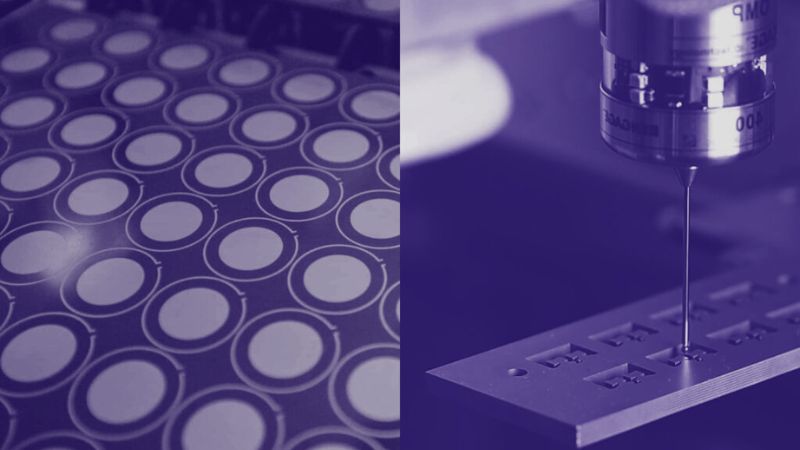
After UV exposure, the brass sheet goes into a developer bath. This removes the unexposed photoresist and leaves only the hardened part. This step exposes the metal areas that need to be etched.
The developer type and time depend on the resist used. After development is complete, you can rinse and check the sheet under a bright light. Any leftover resist is cleaned off, and only the correct areas should be exposed.
Step 5: Etching
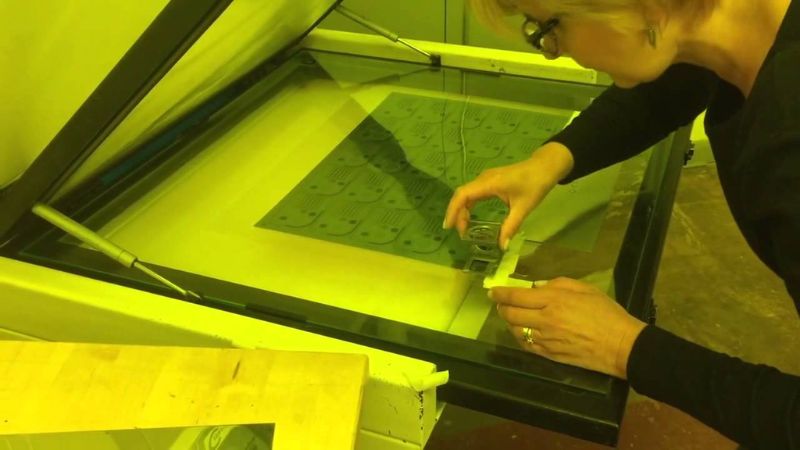
Now you can expose the metal area to a chemical solution. The thin brass sheet chemical etching is placed in a controlled bath of etchant. Mostly ferric chloride or cupric chloride is used in the photochemical etching. These chemicals dissolve the brass in the open areas.
The brass photochemical etching period depends on:
- Brass thickness
- Etchant strength
- Desired depth
It is important to monitor the chemical reaction to avoid over-etching. Spray etching systems are often used for even results. Once it is complete, remove the sheet to stop the chemical reaction.
Step 6: Stripping and Cleaning
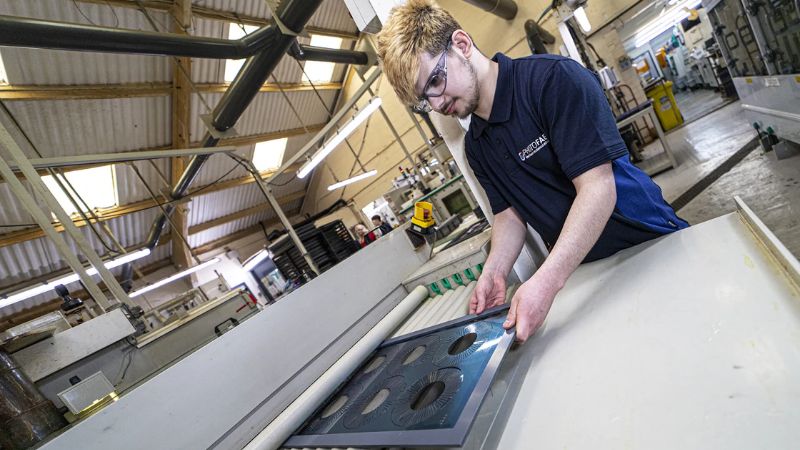
After etching the metal surface, the hardened resist still covers the protected parts. Now it’s stripped off using solvents. This exposes the final etched pattern on the brass. Once stripped, the brass is rinsed and dried. Sometimes a light polish is added to protect from oxidation. The sheet must be fully clean before the next step.
Step 7: Inspection
The last step of inspection is the whole metal part with fine details. Every etched sheet is checked for defects like
- Undercuts or over-etched edges
- Missing or blocked holes
- Scratches or stains
- Warping
You can measure the tight tolerances and fine details with microscopes. Good parts are packed, and any that don’t meet quality are recycled.
FAQs
What chemical is used to etch brass?
For brass etching, people mostly use ferric chloride. It is a brown liquid that reacts with the brass surface. This chemical removes metal where there is no protective layer. It works well for clean and fine cuts. Some also use nitric acid, but it is stronger and needs more care. Ferric chloride is safer for small shops and detailed work.
How thick is photo-etch brass?
Photo-etched brass is usually very thin. It can be as thin as 0.001 inch and up to 0.040 inch. Common thickness is generally around 0.005 to 0.010 inch. Thin brass is good for fine details and easy cutting. The size you choose depends on your design. Thin sheets bend easily and are used for small or soft parts. Always pick the right thickness for your project. So it stays strong and looks clean.
How to etch brass with acid?
To etch a thin brass sheet by chemical etching with acid, first clean the brass. Then, cover the parts you don’t want etched. Next, place the brass in an acid, like ferric chloride. Let it sit until the metal starts to etch. Check it often. When done, take it out and rinse the metal with water. You can use baking soda to stop the acid. Dry the brass in the open sunlight. Always wear gloves and goggles to keep yourself safe.
Final Thoughts
To sum up, the brass photochemical etching is a smart way to make precise metal parts without bending. It works well for fine details and keeps the brass flat and clean. This method also saves time and avoids damage that may happen with laser cutting.When designing parts for brass etching, it’s good to follow simple rules. Keep the metal thickness and feature size balanced. You should avoid sharp corners. Add tabs if you need to keep the part in the sheet. These small tips help you take full advantage of photochemical etching for brass. However, if you want a brand that provides custom brass parts photochemical etching, you need a trusted partner with good skills.
